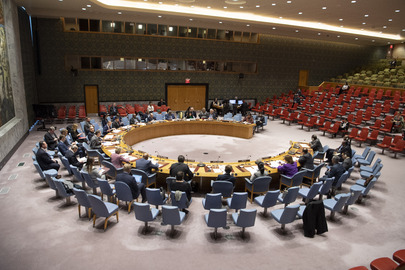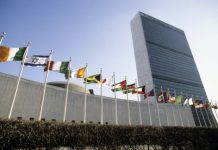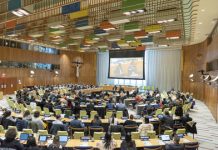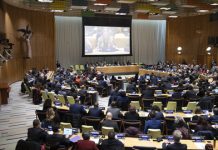Seven of the ten most populous cities in the world are in Asia, with Tokyo, Delhi, Shanghai and Dhaka topping the list. These urban giants, long seen as symbols of opportunity and progress, are now in danger of dragging economies backwards.
In a new report, the UN’s regional development arm, ESCAP, warns that without urgent and inclusive action, these stresses could widen inequality, overstretch public services, and deepen social and environmental tensions.
In response, Armida Salsiah Alisjahbana, ESCAP’s Executive Secretary, is calling for a new urban model that prioritises equity and resilience.
“The road to the 2030 Agenda for Sustainable Development runs through cities and across the entirety of human settlements,” she wrote in a foreword to the report, stressing the need for decisive and inclusive action.
Ten largest cities in the world in 2024.
Skyrocketing temperatures
The climate crisis is pushing many of Asia’s cities to their limits.
In 2024, record temperatures swept through South and Southeast Asia – from Dhaka and Delhi to Phnom Penh and Manila – straining infrastructure and healthcare systems.
The “urban heat island effect”, which causes cities to be hotter than surrounding rural areas, is worsening these conditions, especially for the elderly and the lowest earners in crowded informal settlements.
Between 2000 and 2019, nearly half of all global heat-related deaths occurred in Asia and the Pacific. With rising temperatures and shrinking green spaces, risks are growing.
Some cities are already investing in innovative solutions to adapt to climate extremes.
In Shanghai’s flood-prone Pudong New District, authorities have responded with a real-time flood forecasting and early warning system covering over 1,200 square kilometres.
By integrating weather forecasts and hydrological data, the system enables rapid simulation of flood events, giving local agencies critical lead time to act.
Rapidly ageing populations
Meanwhile, the region is experiencing a profound demographic shift. By 2050, the number of older persons in Asia and the Pacific is projected to reach 1.3 billion – nearly double the figure in 2024.
As birth rates fall and rural migration slows, cities are aging and – in some cases – beginning to shrink. East Asia is already witnessing this with “shrinking cities” emerging after decades of expansion.
This trend places growing pressure on city planners to adapt infrastructure, healthcare and public services to meet the needs of older residents, many of whom live alone. Yet most cities remain underprepared.
In Dhaka, stark inequality is laid bare as informal settlements sprawl in the foreground, shadowed by rising high-rises in the distance.
Expanding informal settlements
A third trend is the rapid growth of informal settlements and shanty towns.
With housing prices soaring and wages stagnating, millions are being pushed into slums and unregulated neighbourhoods. These areas are often the first to face climate shocks – and the last to receive services like sanitation or emergency relief.
“When housing becomes a commodity, rather than a place to live, it creates systemic risks for urban economies and by extension national and even global economies,” the report notes.
Turn risks into opportunities
Despite the challenges, ESCAP stresses that cities remain central to Asia’s sustainable future.
To turn risks into opportunities, the report calls for integrated urban planning, stronger local data systems and diversified financing – so cities can build resilience, foster equity and promote sustainable growth.
It also urges countries to strengthen regional cooperation and city networks to share solutions.
Ministers and top government officials are expected to discuss these recommendations, along with other key sustainable development issues at the 81st session of the Commission in Bangkok this week.
Source of original article: United Nations (news.un.org). Photo credit: UN. The content of this article does not necessarily reflect the views or opinion of Global Diaspora News (www.globaldiasporanews.net).
To submit your press release: (https://www.globaldiasporanews.com/pr).
To advertise on Global Diaspora News: (www.globaldiasporanews.com/ads).
Sign up to Global Diaspora News newsletter (https://www.globaldiasporanews.com/newsletter/) to start receiving updates and opportunities directly in your email inbox for free.































